The Long Way to Bwindi
For my dad’s 60th birthday, we planned the trip of a lifetime: a family journey to Africa — three countries, endless memories, and one jaw-dropping trek into the mountains of Uganda.
Our first stop was Entebbe, after a marathon journey: San Diego → Chicago → Brussels → Kigali → Entebbe. Twenty-two hours of travel across ten time zones. Fortunately, Summer and I were able to snag economy plus seats — not business class, but with just enough room to get some rest. We met up with my parents and sister Emma in Brussels, and from there we were together for the rest of the ride.
Flying over the Sahara Desert was a surreal experience — an endless expanse of golden nothingness, reminding me just how vast the world really is.
Uganda on the Ground
We landed in Entebbe late at night and stayed near the airport for a quick overnight. We were buzzing with excitement, barely able to sleep.
Uganda is a country of incredible beauty and deep complexity. Outside the cities, it’s also one of the poorest nations in the world, with many people living on just a few dollars a day. As we drove through the countryside, we saw people harvesting tea leaves, walking miles to fill up jerry cans with water, or transporting goods by foot across long distances.
The road to our hotel, however, was immaculate — freshly paved, smooth, and well-marked. We later learned that Chinese government has been providing funding an infrastructure investment to improve the quality of life for the Ugandan people. These are services the US used to provide to the world in its attempt to spread its vision of democracy and a unified world. As the US has pulled back towards nationalism, we see less and less of this, and China has begun to fill in these gaps spreading their own vision and gaining support.
It’s complicated. But seeing this firsthand drove home the reality of that global shift.
Into the Mountains
The next morning, we flew on a small prop plane over Lake Victoria, low enough to admire the countless islands scattered like confetti across the water. After a short but unforgettable flight, we landed in a remote airstrip near Bwindi Impenetrable Forest and made our way to the Volcanoes Bwindi Lodge.
This place was something else — perched on a hillside, wrapped in jungle, the air thick with the sounds of birds and monkeys. The foliage looked prehistoric, with massive ferns and mossy vines hanging from every branch.
Even more meaningful was the lodge’s community focus. They train locals in hospitality and tourism, creating opportunities for stable employment in an otherwise difficult economic environment. Tourism is one of the few industries providing a path out of poverty here, and we were proud to support it.
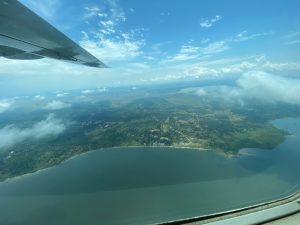
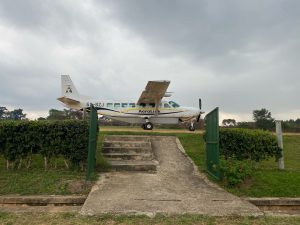
A Wake-Up Song and a Machete Trail
On the morning of the trek, we were woken by a gentle song — a member of the staff singing softly as she brought us coffee and pastries to our rooms. By the time she got to Emma’s room, she was practically shouting. That’s one way to wake up.
After breakfast, we met our trekking team: a guide, a machete-wielding trailblazer, and two riflemen (one in front, one in back). The rifles weren’t for gorillas — they were for mountain elephants, which are territorial and extremely dangerous.
The trekking process is split into two groups:
-
The scout group leaves before sunrise to locate the gorilla families, who move through the forest each day but stay in the same general area.
-
The tour group (us) follows after the scouts have found them, using radio calls and even distinct vocalizations to coordinate.
A Grueling Climb, A Perfect Reunion
We hiked for hours through the jungle. It was hot, steep, and physically demanding. My parents started to fall behind. Eventually, we had to leave them with a porter to rest while the rest of us continued on.
Emma, Summer, and I dragged our feet, not wanting to experience the climax without them. The guides pushed us to keep going, but just as we reached the edge of the gorilla territory, my parents appeared from the brush — tired, muddy, but determined. We met the gorillas as a family, and I’ll never forget that moment.
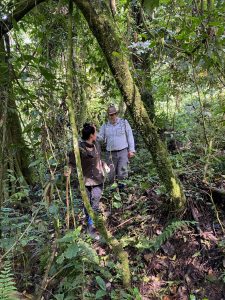
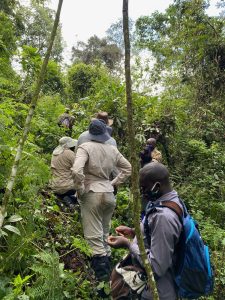
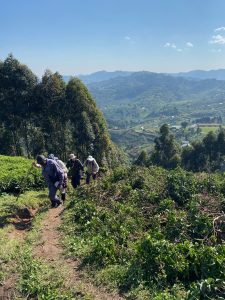
The Hour of a Lifetime
There they were — just a few feet away — an entire family of mountain gorillas. There were two silverbacks, which is a rare occurrence. We watched in awe as a baby climbed across its mother’s chest and fed. We saw juvenile gorillas swung from tree branches. One silverback, lying on his back, ripped an entire tree from the ground without even standing up
They were peaceful, powerful, and completely aware of our presence. But not afraid.
The trackers visit them every single day, regardless of whether there are tourists. This creates a routine, and the gorillas have grown used to a brief human presence, which keeps the experience respectful and non-invasive.
Visitors are only allowed one hour with the gorillas. That’s the rule — no exceptions. After everything we did to get there — planes, trucks, machetes, and hours of hiking — we had sixty minutes. And it was absolutely worth it.
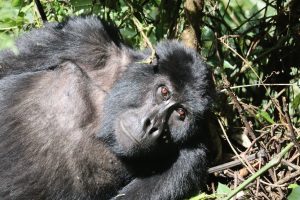
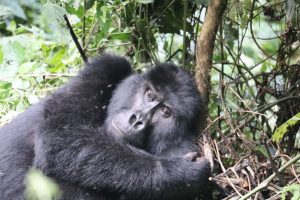
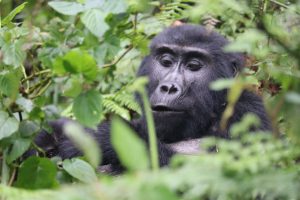
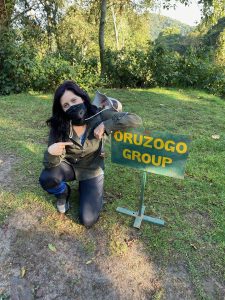
Supporting the Community
One of the things we appreciated most was learning how much of the fee from our gorilla trek — which, yes, is very expensive — goes directly toward building clean water systems, schools, and local infrastructure.
It’s one of the few tourism experiences I’ve ever had that truly feels like a win-win — a moment of awe for the visitor, and a direct investment into the lives of the people who live there.
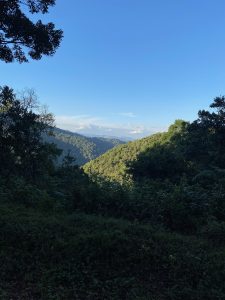
What’s Next
After a long hike out and a well-earned night of sleep back at the lodge, we were packed and ready for the next leg of our trip.
Next stop: Kenya — and a safari unlike any other.
– Vince
